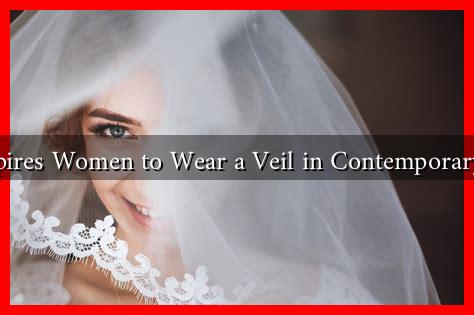-
Table of Contents
What Inspires Women to Wear a Veil in Contemporary Society?
The act of wearing a veil has deep cultural, religious, and personal significance for many women around the world. In contemporary society, the motivations behind this choice are as diverse as the women who make it. This article explores the various factors that inspire women to wear a veil today, examining cultural identity, religious beliefs, personal empowerment, and social activism.
Cultural Identity and Heritage
For many women, wearing a veil is a powerful expression of cultural identity. It serves as a connection to their heritage and traditions, allowing them to honor their ancestry in a modern context. This is particularly evident among immigrant communities, where the veil can symbolize a bridge between the past and the present.
- Preservation of Tradition: In cultures where veiling is a longstanding tradition, women often wear a veil to maintain their cultural practices. For instance, in many Middle Eastern and North African countries, the veil is an integral part of cultural identity.
- Community Solidarity: Wearing a veil can foster a sense of belonging within a community. Women may choose to wear a veil to align themselves with their peers and express solidarity with their cultural group.
Religious Beliefs and Spirituality
Religious motivations are among the most common reasons women choose to wear a veil. In Islam, for example, the hijab is often seen as a form of obedience to God and a manifestation of faith.
- Obedience to Religious Teachings: Many Muslim women wear the hijab as a religious obligation, believing it to be a commandment from God. A study by the Pew Research Center found that 62% of Muslim women in the U.S. wear the hijab as a reflection of their faith.
- Spiritual Connection: For some, wearing a veil enhances their spiritual experience, allowing them to feel closer to their faith and community.
Personal Empowerment and Choice
In contemporary society, the narrative around veiling has shifted significantly. Many women view the choice to wear a veil as an act of empowerment rather than oppression.
- Autonomy and Agency: Women often express that choosing to wear a veil is a personal decision that reflects their autonomy. This perspective challenges the stereotype that veiling is solely a symbol of oppression.
- Reclaiming Identity: Some women wear a veil as a way to reclaim their identity in a world that often objectifies them. By choosing to veil, they assert control over how they present themselves to society.
Social Activism and Political Statements
In recent years, the veil has also become a symbol of social activism. Women have used veiling as a means to challenge stereotypes and advocate for their rights.
- Challenging Stereotypes: Women who wear a veil often confront misconceptions about their lifestyle and beliefs. By embracing their choice, they aim to educate others and dismantle prejudices.
- Political Statements: In some contexts, wearing a veil can be a form of protest against policies that seek to restrict religious expression. For example, the hijab has been used as a symbol of resistance in various movements advocating for women’s rights.
Case Studies and Examples
Several case studies illustrate the diverse motivations behind veiling. For instance, in France, where the hijab has been a contentious issue, many Muslim women have taken to social media to share their stories, emphasizing that their choice to wear a veil is rooted in personal conviction rather than coercion. Similarly, in the United States, organizations like the Muslim Women’s Alliance work to empower women to embrace their identities, including their choice to wear a veil.
Conclusion
The decision to wear a veil in contemporary society is influenced by a myriad of factors, including cultural identity, religious beliefs, personal empowerment, and social activism. As society continues to evolve, so too does the understanding of veiling, moving beyond stereotypes to recognize the complexity of women’s choices. Ultimately, the veil serves as a multifaceted symbol that reflects the diverse experiences and identities of women around the world.
For further reading on this topic, you can explore resources from the Pew Research Center and various academic studies that delve into the sociocultural implications of veiling.

